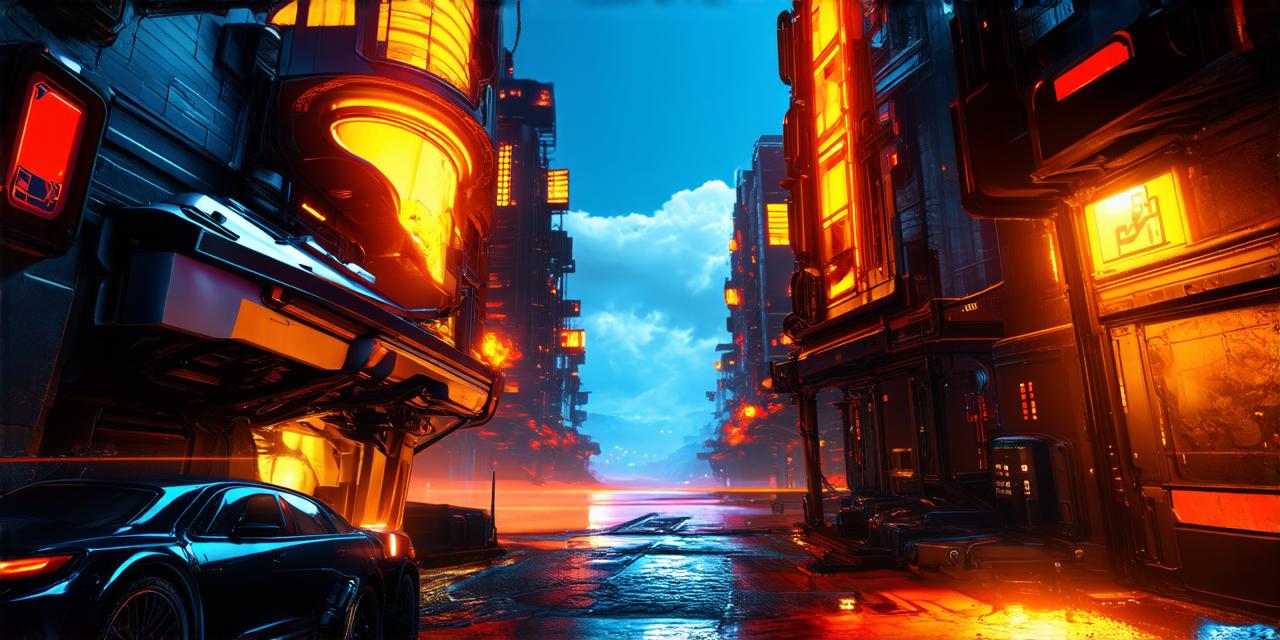Unity 3D is a game engine that has gained immense popularity in the development community due to its versatility and flexibility. The platform offers endless possibilities for creating immersive and interactive experiences, ranging from simple 2D games to complex virtual reality (VR) applications.
Animation in Unity 3D
Animation in Unity 3D involves creating movements and changes in an object or character over time. There are several built-in animation tools available in Unity 3D, each with its own strengths and weaknesses.
Animation in Unity 3D
1. Animator: The Animator is a powerful animation tool that allows developers to create complex animations using a visual interface. It includes features such as blend modes, layering, and state machines, making it ideal for creating humanoid and character animations.
2. Curve Editor: The Curve Editor is a versatile tool that allows developers to create smooth and fluid animations using curves and keyframes. It can be used for simple animations such as moving objects or more complex animations such as particle effects. The Curve Editor also includes features such as easing functions, which allow developers to control the acceleration and deceleration of their animations.
3. Timeline: The Timeline is a visual tool that allows developers to create and edit animations using a timeline-based interface. It can be used for simple animations such as moving objects or more complex animations such as character interactions. The Timeline also includes features such as keyframes, loops, and events, making it ideal for creating interactive animations.
Best Practices for Animation in Unity 3D
When creating animations in Unity 3D, there are several best practices that developers should follow to ensure their animations are engaging and dynamic. These include:

- Keeping animations simple: While complex animations can be impressive, they can also be overwhelming and distracting for viewers. Developers should aim to keep their animations simple and focused on the most important elements of their project.
- Using keyframes effectively: Keyframes are essential for creating smooth and fluid animations in Unity 3D. Developers should use keyframes sparingly and only when necessary, as too many can make their animations feel choppy and unnatural.
- Incorporating physics: Adding physics to animations can create a more realistic and immersive experience for viewers. Developers should consider incorporating physics into their animations wherever possible.
- Testing animations thoroughly: Before releasing an animation, developers should test it thoroughly to ensure that it works as intended and is optimized for performance. This includes testing on different devices and platforms to ensure compatibility.
- Seeking feedback: Finally, developers should seek feedback from their audience to improve their animations and make them more engaging and dynamic. This can include conducting user testing or soliciting feedback through social media or online forums.
Real-Life Examples of Compelling Animations in Unity 3D
To illustrate the versatility and power of Unity 3D, let’s take a look at some real-life examples of compelling animations created using the platform.
- Games: One of the most common use cases for Unity 3D is game development. The platform offers several built-in animation tools and plugins that make it easy to create engaging animations for games. For example, Unity’s Animation window allows developers to create complex animations for characters, objects, and cameras.
- Movies: Unity 3D has also been used in the film industry to create stunning animations and visual effects. For example, the animated movie “Inside Out” was created entirely using Unity 3D’s animation tools. The movie’s creators used keyframe animation, physics-based simulations, and particle effects to bring the characters and environments to life.
- Virtual Reality: Unity 3D is a popular platform for creating virtual reality experiences. The platform offers several built-in animation tools and plugins that make it easy to create engaging animations for VR games and applications. For example, the Oculus SDK includes features like hand tracking and finger movement tracking, which can be used to create realistic character interactions in VR environments.
- Augmented Reality: Unity 3D is also commonly used in augmented reality (AR) development. AR applications require smooth and fluid animations that blend seamlessly with the real world. Unity’s animation tools offer features like layer blending and blend modes, which make it easy to create AR animations that look natural and believable.
Summary
Unity 3D is a powerful tool for creating engaging and dynamic animations that will capture your audience’s attention. By understanding the different animation tools available in Unity 3D and following best practices, developers can create compelling animations that bring their projects to life. From games to movies and everything in between, Unity 3D offers endless possibilities for creating immersive and interactive experiences that will keep viewers coming back for more.
